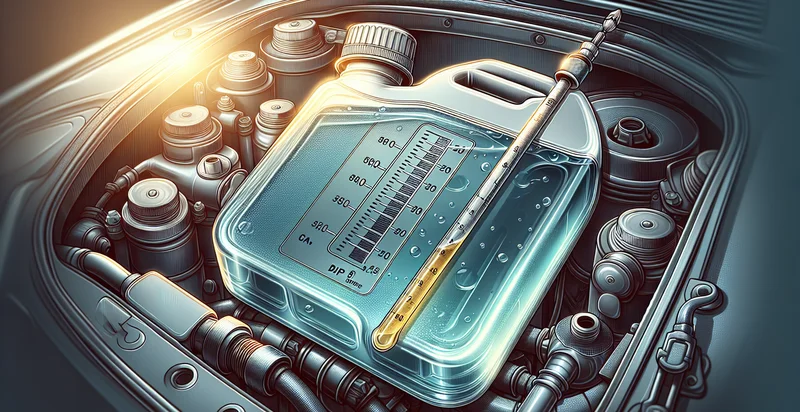Identify brake fluid status
using AI
Below is a free classifier to identify brake fluid status. Just upload your image, and our AI will predict the status of brake fluid levels in a vehicle. - in just seconds.

Contact us for API access
Or, use Nyckel to build highly-accurate custom classifiers in just minutes. No PhD required.
Get started
import nyckel
credentials = nyckel.Credentials("YOUR_CLIENT_ID", "YOUR_CLIENT_SECRET")
nyckel.invoke("brake-fluid-status", "your_image_url", credentials)
fetch('https://www.nyckel.com/v1/functions/brake-fluid-status/invoke', {
method: 'POST',
headers: {
'Authorization': 'Bearer ' + 'YOUR_BEARER_TOKEN',
'Content-Type': 'application/json',
},
body: JSON.stringify(
{"data": "your_image_url"}
)
})
.then(response => response.json())
.then(data => console.log(data));
curl -X POST \
-H "Content-Type: application/json" \
-H "Authorization: Bearer YOUR_BEARER_TOKEN" \
-d '{"data": "your_image_url"}' \
https://www.nyckel.com/v1/functions/brake-fluid-status/invoke
How this classifier works
To start, upload your image. Our AI tool will then predict the status of brake fluid levels in a vehicle..
This pretrained image model uses a Nyckel-created dataset and has 13 labels, including Air Bubbles, Clean, Clear, Contaminated, Dirty, Discolored, Filtered, Full, Low and New.
We'll also show a confidence score (the higher the number, the more confident the AI model is around the status of brake fluid levels in a vehicle.).
Whether you're just curious or building brake fluid status detection into your application, we hope our classifier proves helpful.
Related Classifiers
Need to identify brake fluid status at scale?
Get API or Zapier access to this classifier for free. It's perfect for:
- Automated Vehicle Maintenance Alerts: The brake fluid status identifier can be integrated into vehicle diagnostic systems to automatically alert users when their brake fluid is low or contaminated. This proactive notification helps drivers maintain optimal braking performance and reduces the risk of accidents due to brake failure.
- Fleet Management Optimization: Fleet managers can utilize the brake fluid status function to monitor the condition of brake fluid across an entire fleet of vehicles. By ensuring all vehicles have sufficient and high-quality brake fluid, companies can minimize maintenance costs and prevent accidents caused by brake system failures.
- Automotive Repair Shops Efficiency: Repair shops can implement this function to quickly assess brake fluid conditions during service appointments. This enhances service efficiency and enables technicians to offer targeted recommendations, improving customer satisfaction and potentially increasing service revenue.
- Predictive Maintenance Modeling: The brake fluid status identifier can feed data into predictive maintenance models that analyze braking systems' health over time. By identifying trends and anomalies, businesses can schedule interventions before critical failures occur, saving time and costs associated with unexpected repairs.
- Enhanced Driver Safety Programs: Organizations focused on driver safety can incorporate this function into their training programs. By educating drivers on brake fluid maintenance and providing real-time status updates, they can encourage safer driving practices and reduce the likelihood of accidents.
- Insurance Risk Assessment: Insurance companies can leverage the brake fluid status identifier as part of their risk evaluation process. By understanding a vehicle’s maintenance state, insurers can offer more tailored policies that reflect the true risk associated with different driving behaviors and vehicle conditions.
- Consumer Vehicle Diagnostic Apps: Mobile applications designed for vehicle maintenance can integrate this function to help consumers assess their own vehicle's brake fluid status easily. This empowers users with the knowledge they need to take appropriate action, promoting a culture of preventative care among vehicle owners.


